
Gracilaria is a genus of red algae (Rhodophyta) notable for its economic importance as an agarophyte, as well as its use as a food for humans and various species of shellfish. Various species within the genus are cultivated among Asia, South America, Africa and Oceania.
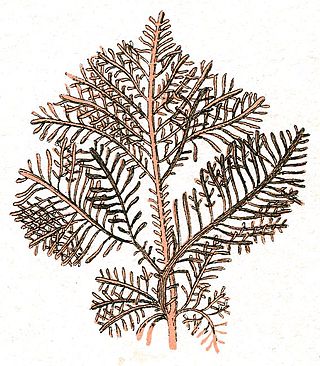
The Gelidiaceae is a small family of red algae containing eight genera. Many species of this algae are used to make agar.

Gelidium is a genus of thalloid red algae comprising 134 species. Its members are known by a number of common names.
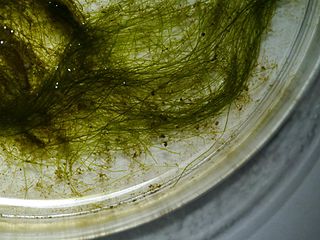
Vaucheria is a genus of Xanthophyceae or yellow-green algae known as water felt. It is one of only two genera in the family Vaucheriaceae. The type species of the genus is Vaucheria disperma.

Kappaphycus is a genus of red algae. Species are distributed in the waters of East Africa, Indonesia, Malaysia, Hainan Island, the Philippines, and Micronesia.
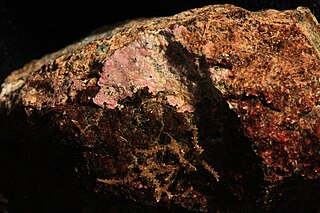
Hildenbrandia is a genus of thalloid red alga comprising about 26 species. The slow-growing, non-mineralized thalli take a crustose form. Hildenbrandia reproduces by means of conceptacles and produces tetraspores.

Galaxauraceae is a family of red algae (Rhodophyta) in the order Nemaliales.
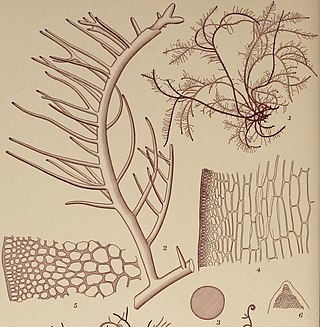
Hypnea is a genus of red algae, and a well known carrageenophyte.

Batrachospermaceae is a family of fresh water red algae (Rhodophyta). Genera within the Batrachospermaceae generally have a "Lemanea-type" life history with carpospores germinating to produce chantransia. Sporophyte phase with meiosis occurs in an apical cell to produce the gametophyte stage. Pit connections have two pit plug cap layers with the other layer enlarged. This family of freshwater red algae is uniaxial, meaning each filament with a single apical cell. The genera included within Batrachospermaceae are listed in the table below.

Callithamniaceae is a family of red algae (Rhodophyta) in the order Ceramiales. The family was first described by Friedrich Traugott Kützing in 1843.
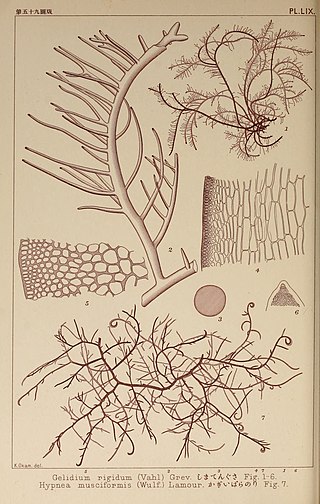
The Gelidiellaceae is a small family of red algae containing 5 genera of agarophytes.
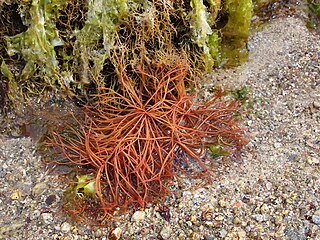
The Gracilariaceae is a small family of red algae containing several genera of agarophytes. It has a world-wide distribution. 24 species are found in China, and 6 species are found in Great Britain and Ireland. It is found in Australia and Chile.
The Pterocladiophilaceae is a small family of red algae containing 2 genera of thallus parasitic algae.

Naccariaceae is a family of red algae in the order Bonnemaisoniales, with 3 monotypic genera. Which are found in both the Pacific and Atlantic Oceans.

Wrangelia is a genus of red algae in the family Wrangeliaceae.
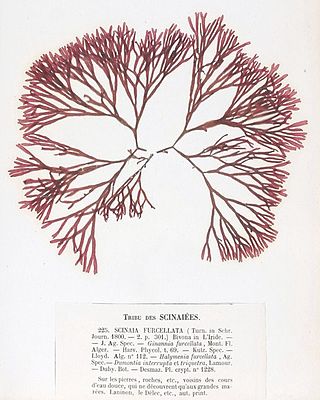
Scinaiaceae is a family of red algae (Rhodophyta) in the order Nemaliales.
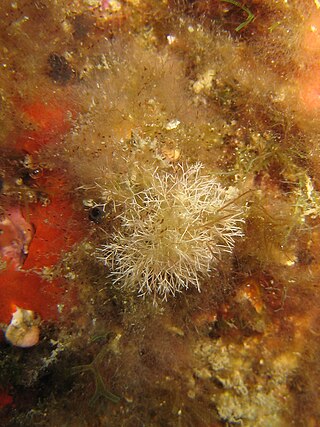
Liagoraceae is a family of red algae (Rhodophyta) in the order Nemaliales. The type genus is LiagoraJ.V.Lamouroux.
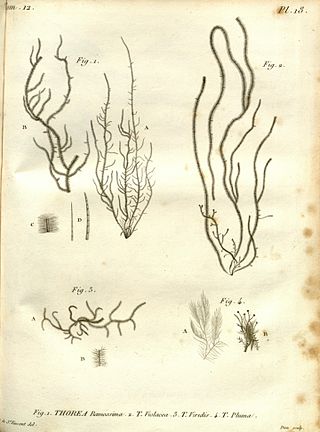
Thoreales is an order of red algae belonging to the class Florideophyceae. The order consists only one family, ThoreaceaeHassall, 1845. The family of Thoreaceae was circumscribed by Arthur Hill Hassall in A history of the British freshwater algae, including descriptions of the Desmideae and Diatomaceae in 1845.
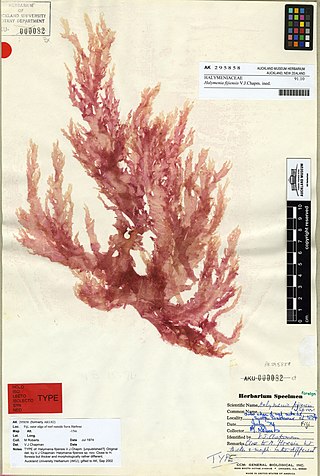
Halymeniales is an order of red algae belonging to the class Florideophyceae and the subclass Rhodymeniophycidae.

Peyssonneliales is a monotypic order of red algae belonging to the class Florideophyceae and the subclass Rhodymeniophycidae. It contains only 1 known family, PeyssonneliaceaeDenizot, M., 1968.
















